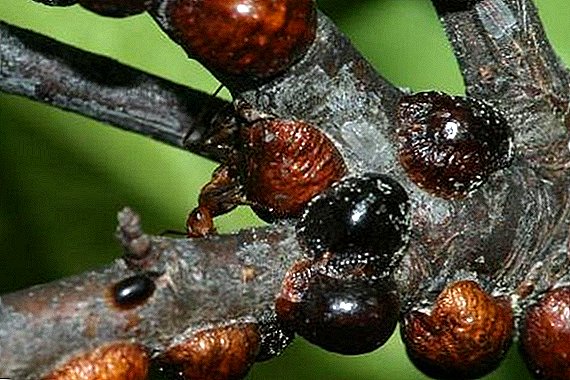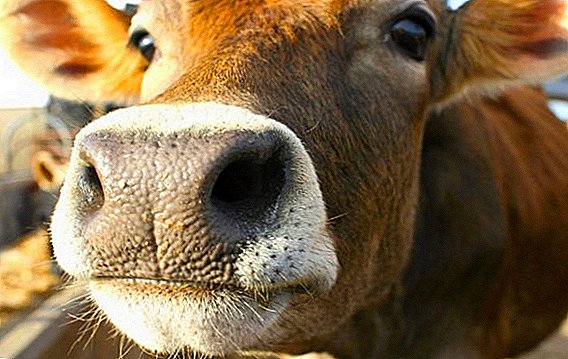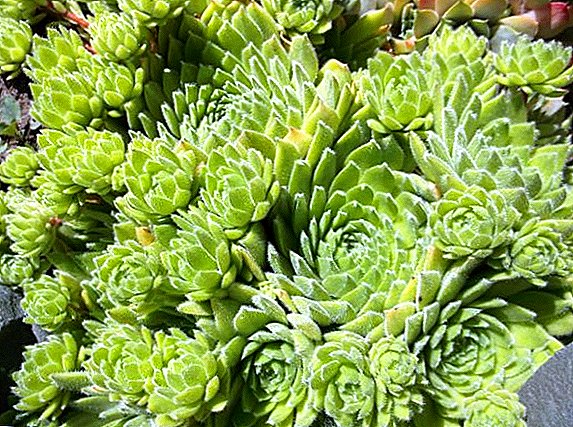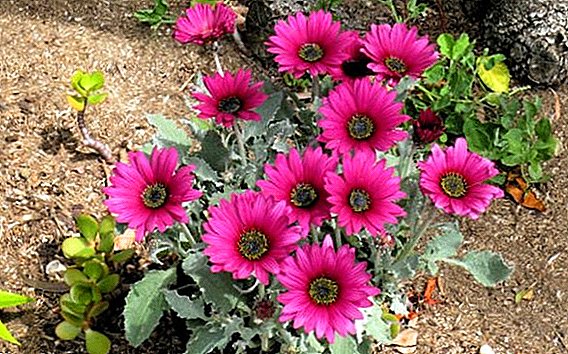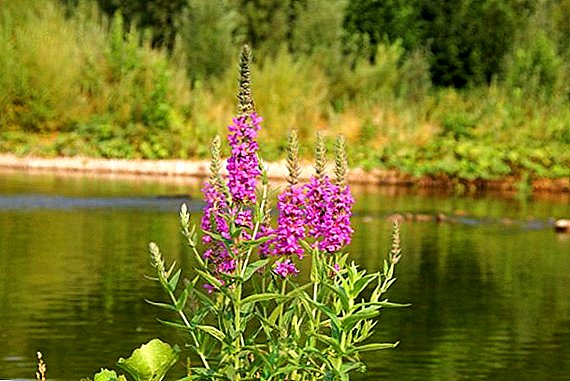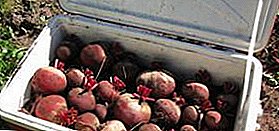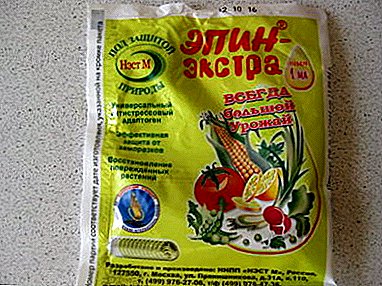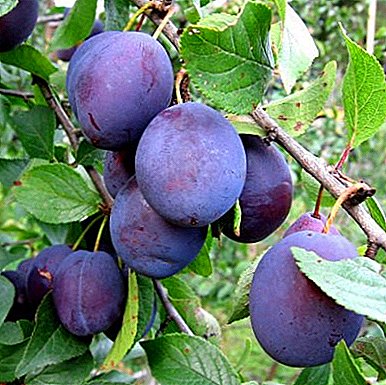
Plum does not lose its popularity among gardeners for many years. There are a lot of great varieties that are suitable for different climatic conditions.
When planting several trees, you can choose samobfruitnyh varieties.
If, however, only one sapling is planned to be planted on the plot, the variety should be self-fruited. One of these varieties is the plum "Egg blue", got its name because of the characteristic egg-shaped berries.
It is perfect for growing in the middle climate zone and has a number of unique, noteworthy properties.
Description of the plum "Egg blue"
Tree Egg Blue is very tall, about 6 m tall.
Crown medium thick, spreading, oval.
Shoots smooth, dark, strong. Buds are small, not pressed close to the escape.
Leaves elongated, oval, glossy, dark in color, with large teeth and a small petiole. The flowers are quite large, white, with oval petals, located only on young annual twigs.
Berries small, weighing about 30-35 gr, in a form are very similar to egg, dark blue color, with a violet shade and a white wax raid.
Pulp soft, bright yellow, very juicy, with a high content of sugar and a very small amount of acid.
Skin thin, but rather dense. The stone is small, oval in shape, well separated from the pulp. The stem is of medium length.
A photo
Visually with a grade of plum "Egg blue" can be found on a photo:



Breeding history and breeding region
“Egg blue” is a very interesting, relatively new variety of plums.
It was obtained from crossing the old Russian variety Skorospelka with the Western European Renklod of Ullens. Breeders of the Russian Institute of Horticulture were engaged in breeding it. Vs Simonov, H.K. Enikeev and S.N. Satarov .
Zoned "Egg blue" in 1986 in all central regions of Russia.
Due to its frost resistance, it is often grown in Belarus, Moldova, Ukraine and the Baltic States.
Characteristics of a variety
 "Egg blue" is considered one of the most frost-resistant plum varieties.
"Egg blue" is considered one of the most frost-resistant plum varieties.
Maintains a drop in t to -30-35 С no damage to shoots and fruit buds.
Blooms in the middle of May and very tolerates frost well in this period.
The term ripening berries fairly early: middle or end of August.
The tree is durableliving on average 25-30 years and begins to bear fruit in the 5th year after planting.
Variety is self-fertile, ie, additional pollination and planting a number of other varieties he does not need.
High yield is no different. From an adult tree, on average they get about 10-12 kg of berries.
"Egg blue" does not tolerate drought very well, and in hot weather requires abundant and frequent watering.
When transporting berries are damaged slightly and stored for long. Used mainly for fresh consumption.
Planting and care
The best time to plant is early spring. It is important to have time to plant a seedling in the period from complete melting of snow to the beginning of bud break.
For Egg Blue is best suited. wet loamy soilwith high calcium and low acidity. Groundwater at the site should not be located above 1.5-2 m.
It is better to plant a tree on well-lit and warm slopes.
The soil for planting is prepared in the fall: they dig well and lime. At the same time, the landing pits, about 60 cm deep and 70–80 cm in diameter, are also being dug out. 400-500 g wood ashand then fill with cooked primer. To do this, the top layer of excavated earth is mixed with two incomplete buckets of compost or rotted manure and add 0.5 kg of superphosphate and 0.1 kg of potassium sulfate.
 A peg is placed in the prepared pit and the seedling is carefully placed, gradually dropping and tamping down the soil.
A peg is placed in the prepared pit and the seedling is carefully placed, gradually dropping and tamping down the soil.
The root neck when planting is left 3-4 cm above ground level. The tree is slightly tied to a peg, and around the roots make a deep hole for watering. After planting, the seedling is watered abundantly. For better survival growth stimulator solution can be used (3 tablets per bucket of water). After watering, the soil around the trunk is thoroughly mulched with dry peat or compost.
Begin to apply fertilizer only a year later after landing. Conduct 2 dressings with nitrogen fertilizers: at the beginning and at the end of June. After that, once every 2 weeks, foliar fertilizers can be used as a growth stimulant.
In the third and subsequent years, before the onset of fruiting, fertilizers are applied three times per season: in May, June and August. May feeding is good to do with a solution of urea (3 tbsp. Per bucket of water), in June you can use the same amount of nitrophoska, and in August - superphosphate and potassium sulphate (3 tbsp. Per pail of water). At least one liter of such fertilizers should be per tree.
In the fifth year, when the tree begins to bear fruit, fertilizing is done 3 times: before flowering, during the ripening of the berries and after their collection. At the same time you should not forget about regular weeding, watering, loosening and mulching. In the summer, a mixture of dry peat and dolomite flour is perfect as mulch.
The first pruning of the tree is carried out immediately after planting. At the same time, no more than 10 main branches are left, from which the crown will be formed, and the rest will be removed.
For this spring, it is necessary to remove all frozen and diseased branches, shorten growths and remove unnecessary shoots. We must not forget about the removal of the root growth to give the tree more strength to grow.
"Egg blue" possesses amazing winter hardiness and does not need shelter from frost. To protect against damage by rodents, the trunk can be wrapped with a thin polymer mesh or wrapped in old nylon pantyhose.
In addition to all the advantages of this wonderful variety, it also has a significant drawback: addiction congestion and some pests.
Diseases and pests
 Often, Egg Blue can be attacked by aphids and plum moths and is prone to a disease such as cholesterol.
Often, Egg Blue can be attacked by aphids and plum moths and is prone to a disease such as cholesterol.
Holey blotch or congestion primarily affects the leaves of the plant. The first signs of this disease are the appearance of small red spots on the leaves. Over time, in their place there are holes.
The disease is caused by a fungus that develops well in wet and cool weather. Affected by this not only leaves, but also young green shoots. The spores of the fungus are spread very quickly by the wind, and they can infect all bone crops that grow nearby.
Various fungicides are used as measures to combat this disease. It is important not to use the same tool all the time, but to alternate between different types of drugs.
Moth can also seriously damage the plum crop. These insects feed on both ovaries and ripe berries. Caterpillar caterpillars and adults also cause great harm.
Measures to combat this pest consist in scraping the old bark from the branches and trunk, as well as in the use of special trapping belts. Every 2 weeks they are checked and destroyed by pests. If the moths are too much, then apply spraying wood with special preparations.
Not less damage to the plum brings aphid. It appears in the young root overgrown trees and spreads throughout the plant. Aphids feed on the sap of young leaves and shoots and can greatly weaken and even destroy the tree.
To combat aphids, first cut off all root growth, scrape off the old diseased bark and lime the trunk and main branches. Well helps processing wood "Inta-Vir" or a solution of soap.
Sort "Egg blue" has a lot of advantages, but is not suitable for industrial cultivation. But it can be grown on its own plot.
To the meritsfirst of all include:

- high winter hardiness;
- self-fertility;
- very tasty and sweet fruit.
Disadvantages this variety has some:
- susceptibility to disease;
- tall
If you provide the tree with good care and timely treatment, then most of these problems can be avoided.


